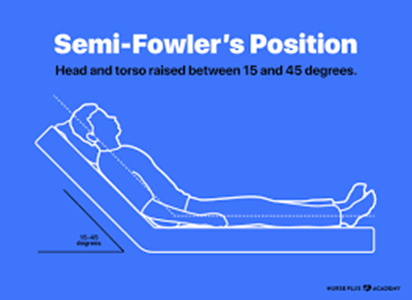A nurse is assessing bowel sounds on post-operative day 2 abdominal surgery patients. He does not hear bowel sounds. What should the nurse conclude about his findings?
The patient may have paralytic ileus that could last 3-5 days
It is normal for all post-op patients not to have bowel sounds
The absence of bowel sounds is an abnormal finding
Document absent bowel sounds and notify the physician
The Correct Answer is A
Choice A rationale: The absence of bowel sounds on post-operative day 2 may indicate paralytic ileus, which is a temporary impairment of bowel motility. Paralytic ileus can last for 3-5 days postoperatively and is considered a normal response to surgery.
Choice B rationale: It is not normal for all post-op patients to have absent bowel sounds on day 2. Bowel sounds should typically return within the first 24 hours after surgery.
Choice C rationale: The absence of bowel sounds can be a normal finding in the immediate postoperative period, especially within the first 24 hours. However, it becomes abnormal if prolonged.
Choice D rationale: Documenting absent bowel sounds is appropriate, but notifying the physician should be based on the overall clinical picture and other symptoms.
Nursing Test Bank
Naxlex Comprehensive Predictor Exams
Related Questions
Correct Answer is B
Explanation
Choice A rationale: Protective supine positioning is not ideal for managing dysphagia or facilitating swallowing.
Choice B rationale: Semi-Fowlers positioning, with the head of the bed elevated at a 30 to 45-degree angle, is often recommended for clients with dysphagia. This position helps prevent aspiration during eating and promotes effective swallowing.
Choice C rationale: Low-Fowlers and Fowlers positions may not be as effective in preventing aspiration during eating as the Semi-Fowlers position.
Choice D rationale: Fowlers positioning alone may not be sufficient for managing dysphagia; Semi-Fowlers is a more specific recommendation.

Correct Answer is D
Explanation
Choice A rationale: The stool test for occult blood is not primarily designed to detect bacteria.
Choice B rationale: Parasites are not typically detected through a stool test for occult blood.
Choice C rationale: Steatorrhea refers to the presence of excess fat in the stool and is not the primary focus of a stool test for occult blood.
Choice D rationale: The purpose of the stool test for occult blood is to check for the presence of blood in the stool, which may not be visible to the naked eye. This can be an indicator of gastrointestinal bleeding.
Whether you are a student looking to ace your exams or a practicing nurse seeking to enhance your expertise , our nursing education contents will empower you with the confidence and competence to make a difference in the lives of patients and become a respected leader in the healthcare field.
Visit Naxlex, invest in your future and unlock endless possibilities with our unparalleled nursing education contents today
Report Wrong Answer on the Current Question
Do you disagree with the answer? If yes, what is your expected answer? Explain.
Kindly be descriptive with the issue you are facing.
